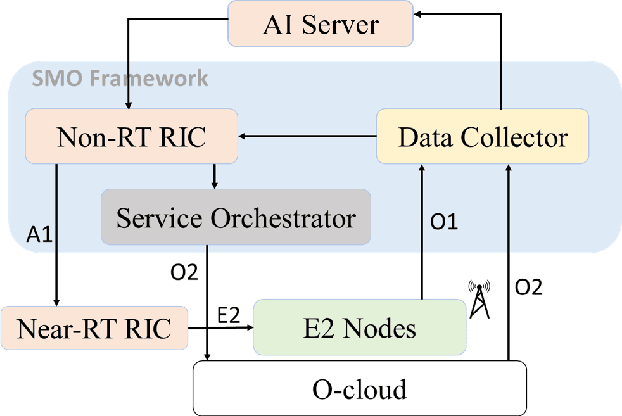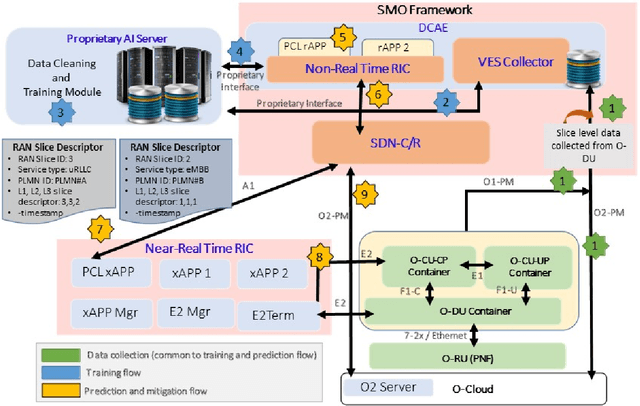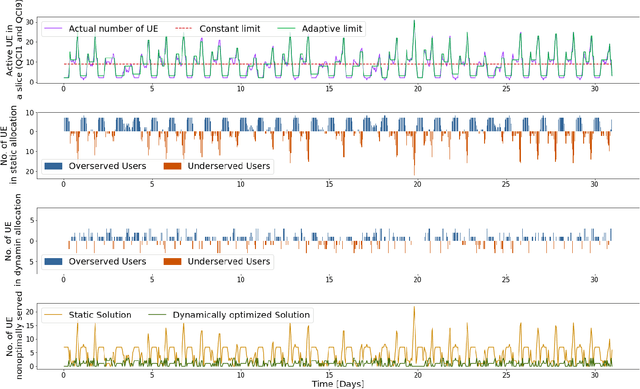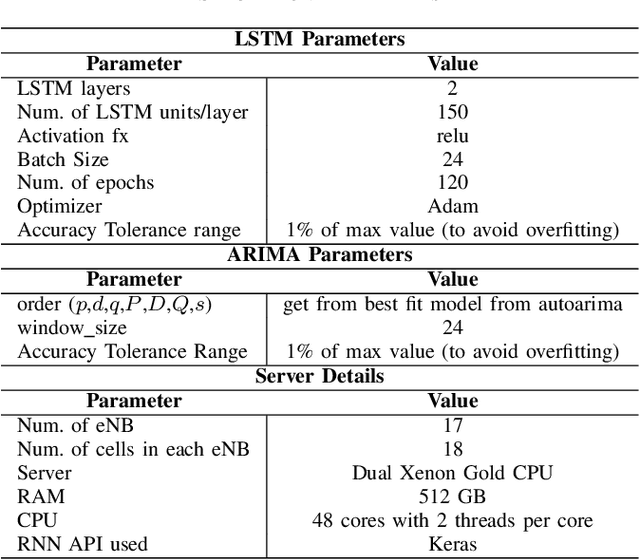Rahul Banerji
Predictive Closed-Loop Service Automation in O-RAN based Network Slicing
Feb 04, 2022



Abstract:Network slicing provides introduces customized and agile network deployment for managing different service types for various verticals under the same infrastructure. To cater to the dynamic service requirements of these verticals and meet the required quality-of-service (QoS) mentioned in the service-level agreement (SLA), network slices need to be isolated through dedicated elements and resources. Additionally, allocated resources to these slices need to be continuously monitored and intelligently managed. This enables immediate detection and correction of any SLA violation to support automated service assurance in a closed-loop fashion. By reducing human intervention, intelligent and closed-loop resource management reduces the cost of offering flexible services. Resource management in a network shared among verticals (potentially administered by different providers), would be further facilitated through open and standardized interfaces. Open radio access network (O-RAN) is perhaps the most promising RAN architecture that inherits all the aforementioned features, namely intelligence, open and standard interfaces, and closed control loop. Inspired by this, in this article we provide a closed-loop and intelligent resource provisioning scheme for O-RAN slicing to prevent SLA violations. In order to maintain realism, a real-world dataset of a large operator is used to train a learning solution for optimizing resource utilization in the proposed closed-loop service automation process. Moreover, the deployment architecture and the corresponding flow that are cognizant of the O-RAN requirements are also discussed.
Intelligent O-RAN for Beyond 5G and 6G Wireless Networks
May 17, 2020



Abstract:Building on the principles of openness and intelligence, there has been a concerted global effort from the operators towards enhancing the radio access network (RAN) architecture. The objective is to build an operator-defined RAN architecture (and associated interfaces) on open hardware that provides intelligent radio control for beyond fifth generation (5G) as well as future sixth generation (6G) wireless networks. Specifically, the open-radio access network (O-RAN) alliance has been formed by merging xRAN forum and C-RAN alliance to formally define the requirements that would help achieve this objective. Owing to the importance of O-RAN in the current wireless landscape, this article provides an introduction to the concepts, principles, and requirements of the Open RAN as specified by the O-RAN alliance. In order to illustrate the role of intelligence in O-RAN, we propose an intelligent radio resource management scheme to handle traffic congestion and demonstrate its efficacy on a real-world dataset obtained from a large operator. A high-level architecture of this deployment scenario that is compliant with the O-RAN requirements is also discussed. The article concludes with key technical challenges and open problems for future research and development.
 Add to Chrome
Add to Chrome Add to Firefox
Add to Firefox Add to Edge
Add to Edge